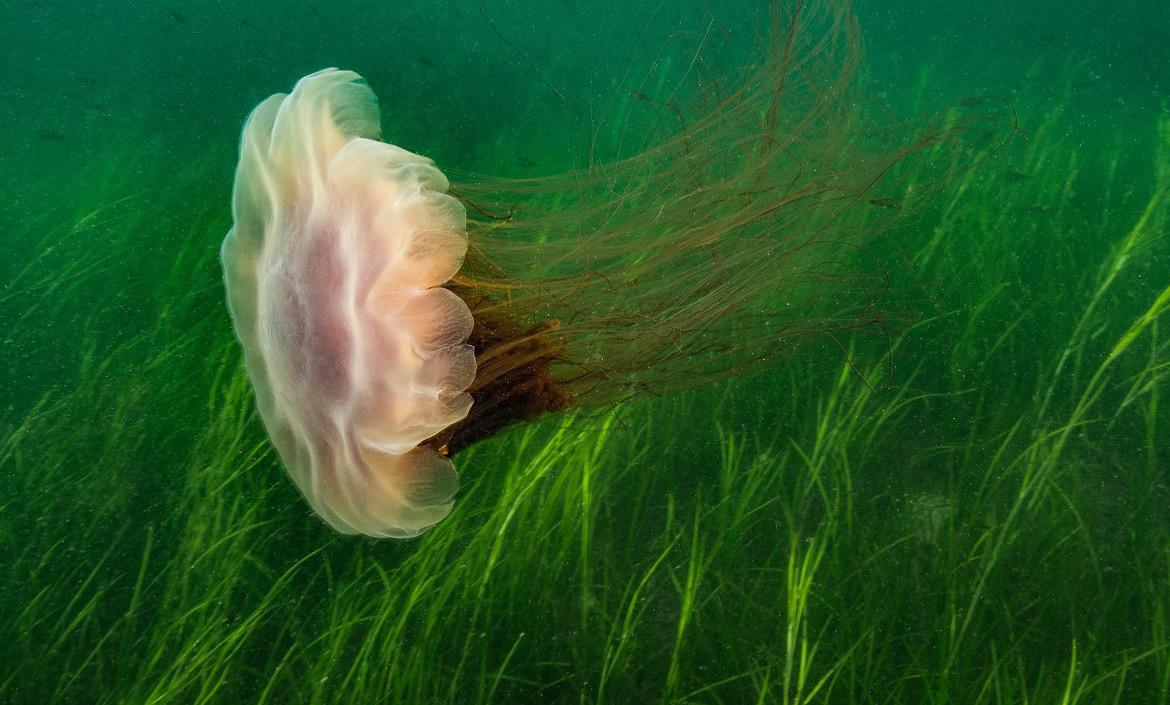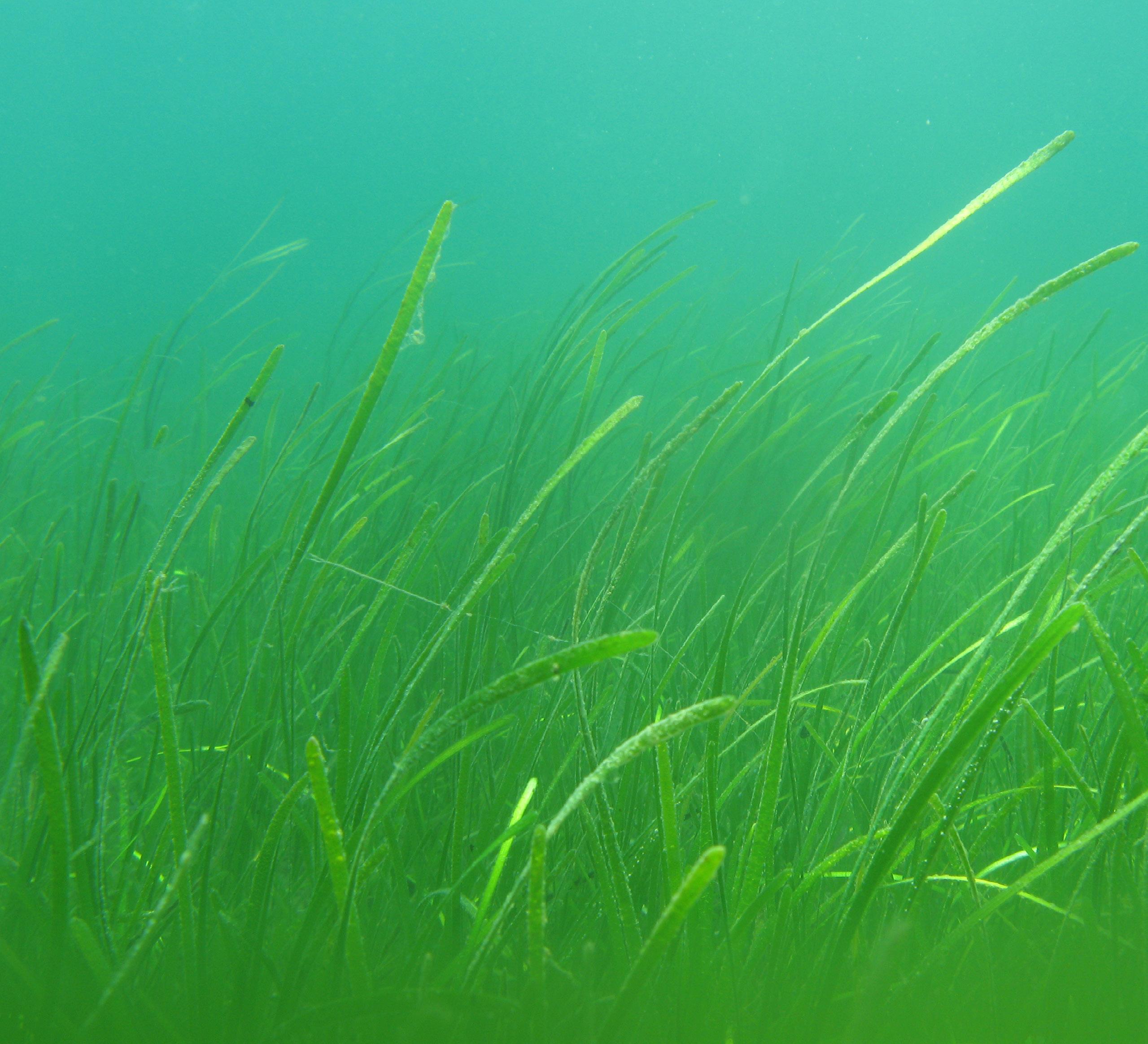
2 minute read
Eelgrass beds
A lion’s mane jellyfish drifting over a bed of eel grass, The Tickles off the Eastern Shore of Nova Scotia. Credit: Nick Hawkins. Eelgrass is a marine flowering plant that forms extensive underwater meadows. Eelgrass can tolerate large fluctuations in salinity and temperature. However, these plants require shallow, clear water to photosynthesize and establish healthy, well-developed root systems to survive. Eelgrass beds are indicators of ecosystem health because they respond to changing environmental conditions quickly. For example, eelgrass will die when they are covered by nuisance algae in waters polluted with too many nutrients. They also die off quickly if water temperatures are too high.
Eelgrass filters water, stabilizes sediments, and acts as a shoreline buffer. It also provides nursery and feeding habitat for some commercial and recreational fish such as Atlantic cod and white hake [See box: Eelgrass: An Ecologically Significant Species]. Small invertebrates also eat bacteria and other organisms growing on eelgrass blades and in the sediments.
Advertisement
Close monitoring of eelgrass beds can provide timely evidence of environmental change. Eelgrass distribution can be mapped using aerial photography, satellite imaging, LIDAR remote sensing, and local knowledge. Plant health can be measured by counting shoots, measuring leaf length, measuring biomass of leaves and shoots, and sampling chemicals within the leaves.
STATUS AND TRENDS
• Eelgrass is widespread throughout nearshore waters in Atlantic Canada. • It is an Ecologically Significant Species (ESS) in Atlantic Canada because of its role in supporting species such as juvenile Atlantic cod. Disruption of the beds would have great ecological consequences for these species. • The status of eelgrass is variable. Some beds have declined or disappeared entirely in the southern Gulf of St. Lawrence and on the Atlantic coast of Nova Scotia. These declines are due to excess nutrients, lack of oxygen, sedimentation, invasive species, and warming conditions. Other beds in these regions are stable, increasing in extent, or status cannot be determined from lack of data. • Increased eelgrass cover has been observed in most areas of
Newfoundland. This is likely due to the warming of naturally cooler waters and reduced winter sea ice conditions, which has led to less damage. However, this increase in eelgrass coverage may be further impacted by the spread and increasing abundance of the European green crab. An invasive species, the green crab has been shown to significantly lower eelgrass coverage in some areas where it has become established (See Aquatic Invasive Species p. 42).











